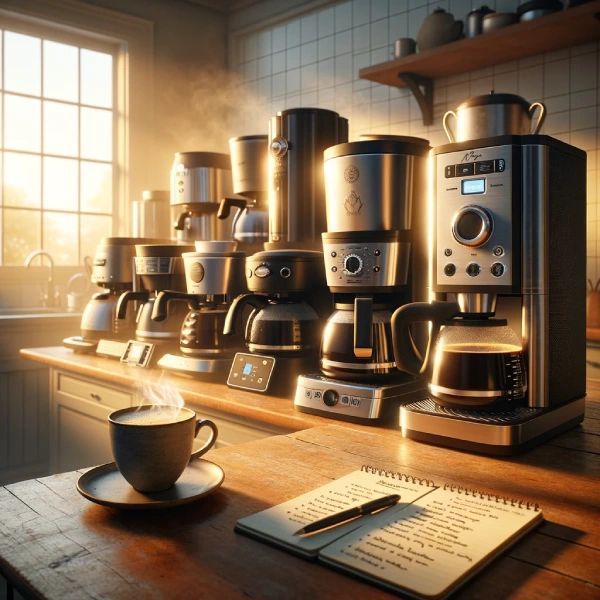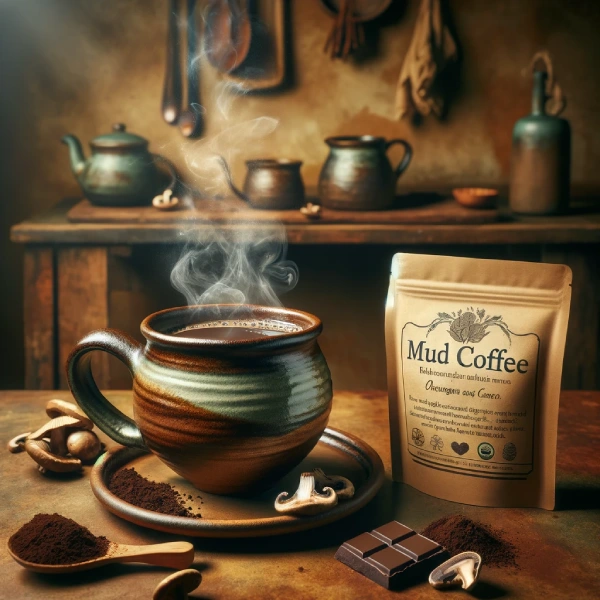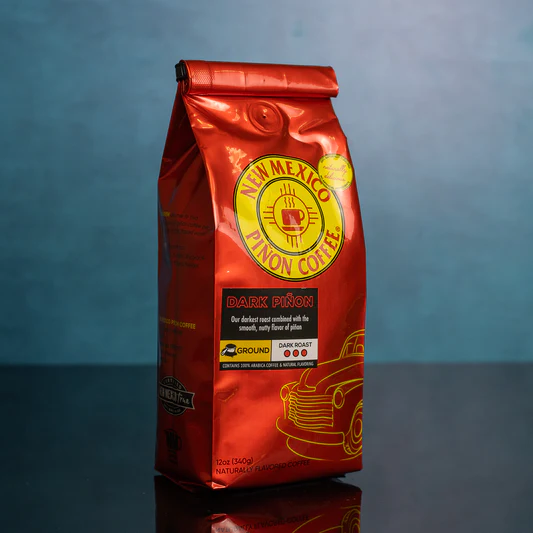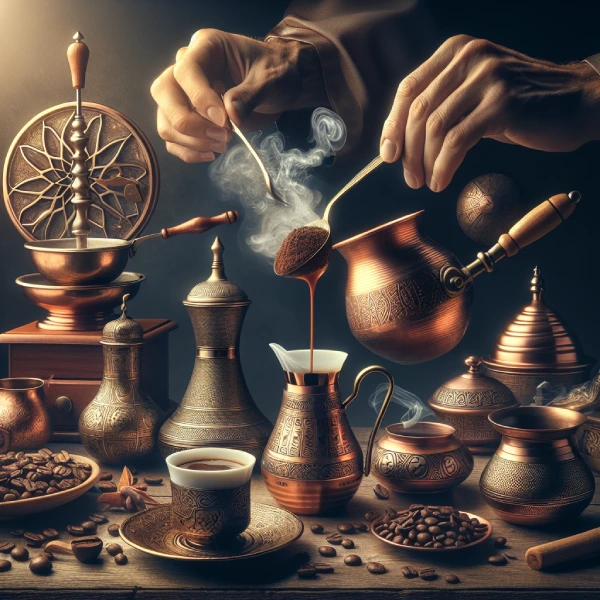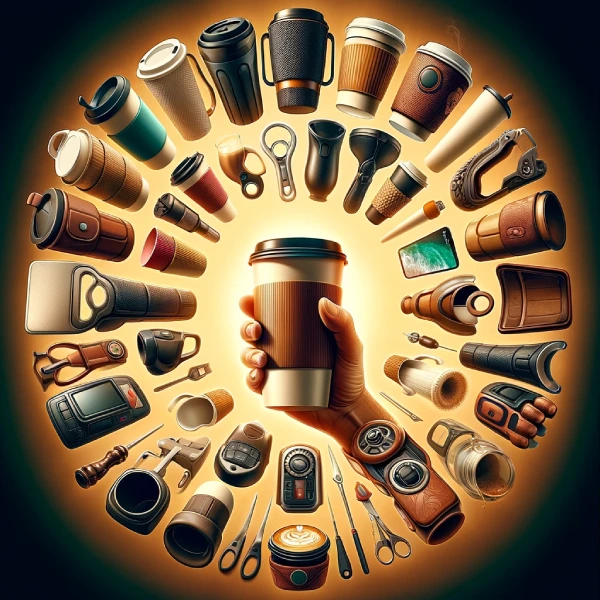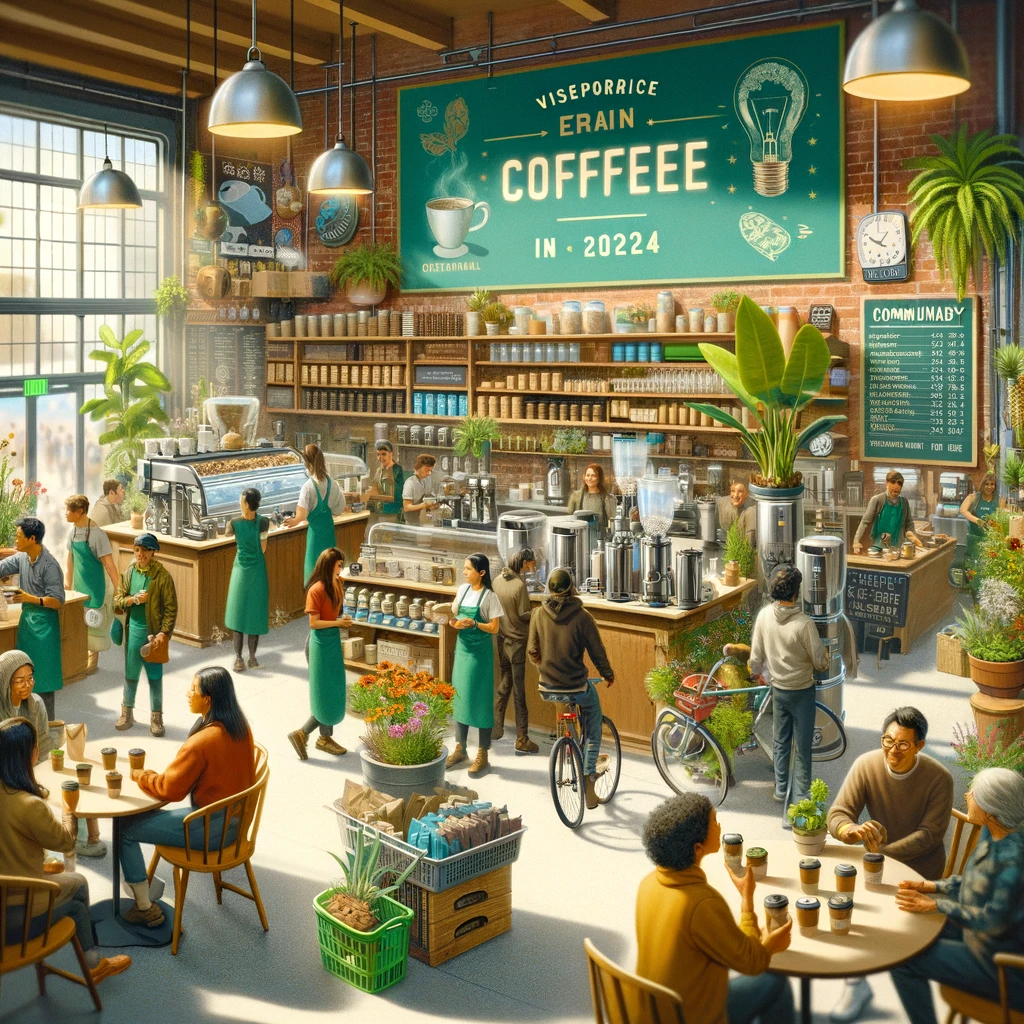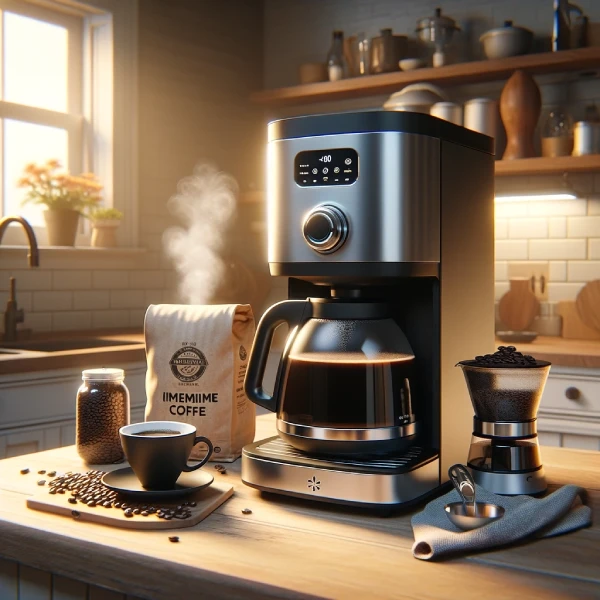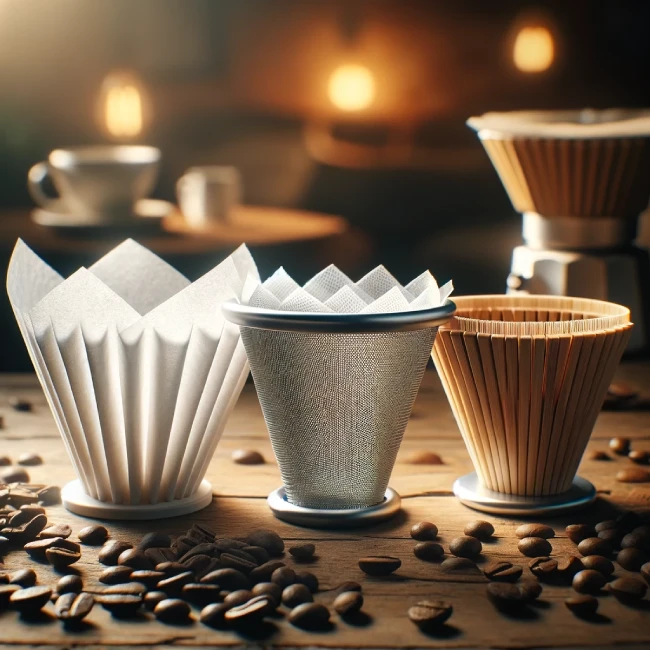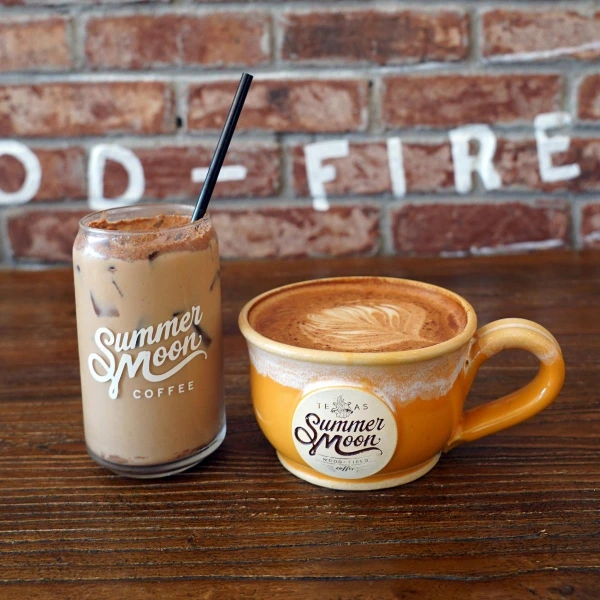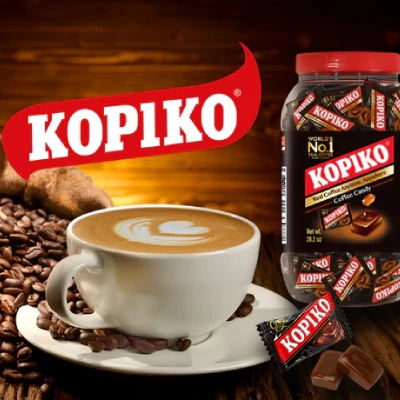When it comes to crafting the perfect cup of coffee, the pour over vs drip coffee debate is a hot topic that stirs up passion in amateurs and connoisseurs alike. Each method offers a distinct approach to brewing that caters to different tastes, schedules, and sensibilities. But the question remains: which brewing method will extract not just the boldest flavors but also your heart?
Backed by the expertise of National Coffee Association, we delve into the intricate details of these beloved brewing methods, aiming to settle this caffeinated query once and for all. With precision and care, we'll explore every facet—from grind size to water temperature—to help you create your personal best brew.
Key Takeaways
- Brewing techniques: Uncover the art and science behind pour over and drip coffee.
- Flavor profiles: Learn how extraction methods affect the subtleties in your cup.
- Coffee equipment: Compare the tools needed for each method and how they contribute to the brew.
- Cost analysis: Break down the economic aspects of pour over versus drip coffee over time.
- Sustainability: Discuss the environmental impact each brewing method has.
Whether you're in pursuit of a meditative morning ritual or a convenient caffeine kickstart, join us as we navigate the complexities of coffee brewing. Ready to elevate your coffee game? Check out our deep-dive into the nuanced world of precision brewing and discover which method will claim its rightful place on your kitchen counter.
The Basics of Pour Over Coffee
Coffee purists often praise the pour over method for its ability to unlock a world of flavors otherwise lost with more automated brewing methods. Perfecting the pour over begins with an understanding of its meticulous process. This artisanal approach demands precision, patience, and the right equipment, such as a gooseneck kettle and a pour over cone. The narrow spout of the kettle allows for a controlled and steady flow of water, while the cone holds the coffee grounds, letting gravity and temperature work their magic.
History and Popularity
The pour over technique, with its roots in early 20th century Europe, has experienced a modern renaissance. Its popularity can be attributed to the ritualistic and intimate nature of the brewing process, allowing each cup to be customized to the drinker's preference. Coffee aficionados worldwide are adopting this method, drawn by the promise of a superior taste experience.
Essential Equipment for Pour Over
Gooseneck Kettle
The elegant curves of a gooseneck kettle aren't just for show. Designed to give you control over the pace and distribution of water, this kettle is crucial in achieving an even coffee extraction — a pillar of premium pour over coffee.
Pour Over Cone
Your choice of cone — be it ceramic, glass, metal, or plastic — impacts heat retention and thus the extraction process. Each material presents its own benefits, catering to different preferences and brewing conditions.
Advantages of Pour Over Coffee
Why do coffee lovers worldwide dedicate time each morning to pour over coffee? Control and customization are paramount. The ability to modulate every variable, from the temperature of the water to the rate of pour, distinguishes this method. This freedom allows the brewer to emphasize certain notes and textures within the coffee, catering to the palate in ways that a drip coffee machine simply cannot match.
Control and Customization
From bloom to the final drop, the pour over method hands you the reins to the brewing kingdom. You decide the water's temperature, which in turn affects the acidity and strength of the brew. You control the speed and pattern of your pour, directly influencing the body and clarity of your coffee.
The Artistry of the Brew
Beyond the mechanics, pour over brewing is a sensory pleasure, an almost therapeutic process that encourages presence and mindfulness. The aroma, the sound of the water trickling through the grounds, the anticipation of the first sip — it is, for many, a cherished daily ritual.
The Pour Over Process
Mastering the pour over is akin to learning a fine craft. It begins with fresh, quality beans ground to the right size — fine, like table salt, to achieve a balanced extraction. Water just off boil is then poured in stages: the 'bloom' to release gases, followed by a gentle, continuous spiral, ensuring all grounds are saturated. Timing is key; too quick and under-extraction occurs, too slow, and you may find an over-extracted, bitter brew.
Step-by-Step Guide
A successful pour over starts with rinsing the filter to remove paper taste and warming the vessel. After the bloom, you carefully pour water in slow circles, allowing the coffee to "draw down" between pours. This methodical process can take up to four minutes, during which your patience is rewarded with a drink that speaks to your commitment.
Tips for Mastery
Try different pouring techniques, like the pulse pour or continuous pour, to see how they change your coffee. Keep your water temperature consistent and adjust your grind size as needed. Above all, practice is key to pour over perfection.
Delving into Drip Coffee
If the pour over method is an artist's brushstroke, drip coffee is the printing press—prized for its consistency and ease. Drip brewing democratizes good coffee, making it accessible to anyone with a drip coffee maker. Simply add water and grounds, press a button, and let the machine do the work. While it may lack the personal touch of pour over, it more than makes up for that in reliability and convenience, especially when serving multiple coffee drinkers.
Understanding Drip Coffee
Drip coffee has a noteworthy place in modern culture, emblematic of the post-war American lifestyle where convenience reigns supreme. Today, automatic drip machines come with numerous features, from programmable settings to elaborate filtration systems, designed to improve the user experience and cup quality.
Choosing the Best Drip Coffee Maker
In the world of drip coffeemakers, options range from basic models to high-tech machines. Seeking out the best coffee maker is a journey of its own, with considerations like brewing temperature, carafe type, and programmability taking center stage.
Benefits of Drip Coffee Brewing
When time is of the essence or you're catering to a group, drip coffee shines. This method's ability to yield multiple cups of consistent quality with minimal input from the user is unrivaled. It's also friendly to those who may not want to fuss with the variables of pour over but still yearn for a good brew.
Convenience and Consistency
Convenience is perfected in the design of the drip coffee maker. Its ability to deliver a decent cup with little more than the press of a button makes it a staple in both homes and offices. Additionally, many modern machines maintain consistent brewing temperatures and times, resulting in a uniform cup day in and day out.
Serving a Crowd
When entertaining guests or managing a busy weekday morning, drip coffee's ability to produce a pot that can serve many is invaluable. This method also allows for advanced prep; a programmable machine can have your coffee ready when you awake, becoming your silent morning butler.
Demystifying the Drip Process
The inner workings of a drip coffee maker are elegantly simple. Water is heated in a reservoir and then showered over the coffee grounds nestled in a filter. Gravity assists as the water seeps through the grounds, extracting flavors and oils before greeting you in the carafe below.
How Drip Machines Work
Ideal brewing in a drip machine relies on the correct balance of temperature and water flow. High-end machines often feature "showerhead" designs, distributing water evenly over the grounds for a more balanced extraction compared to the single-stream spouts of less sophisticated models.
Optimizing Your Drip Brew
Although the drip method is largely hands-off, there are still tricks to enhance your brew. Selecting a fine grind, using filtered water, and even stirring the grounds mid-brew can fine-tune your drip coffee's flavor and strength.
Comparing Taste: Pour Over vs Drip
When it boils down to taste, pour over aficionados will vouch for its superior flavor clarity and intricate notes. The hands-on method tends to draw out a more complex flavor profile, allowing aficionados to taste the nuanced differences between bean varietals and roasts. In contrast, the drip coffee method emphasises ease and predictability, often leading to a bold and robust flavor that stands up well to milk and sugar.
The Influence of Extraction
Extraction is the key to unlocking a coffee's full spectrum of flavors. Pour over provides more room to influence the extraction process, making it possible to pinpoint which flavors to enhance or subdue. Drip coffee, on the other hand, relies on the machine's preset extraction method, which is designed to appeal to a broad audience.
Variability and Consistency in Flavor
Flavor consistency is where drip coffee has a notable advantage. Its automated process ensures that every pot is nearly identical to the last, assuming the same type of coffee and water-to-coffee ratio are used.
The Role of Coffee Grounds
Grind Size and Its Impact
Achieving the perfect grind size is essential for any brewing method. Pour over requires a finer grind to match the increased contact time and slower flow rate of water, leading to a more aromatic, nuanced cup. Drip coffee uses a medium grind that pairs well with the quicker flow rate of the water, resulting in a strong, full-bodied flavor.
Best Practices for Grinding Beans
To unlock the fullest potential of your beans, invest in a quality burr grinder that allows for even and adjustable grinds. Freshly grinding beans right before brewing makes a noticeable difference in taste, whether you're preparing pour over or drip coffee.
The Cost of Coffee Brewing: Pour Over vs Drip
While the process plays a pivotal role in choosing between pour over and drip coffee, the associated costs are equally pivotal. Investing in pour over gear might seem steep initially – after all, a high-quality grinder, scale, gooseneck kettle, and cone add up. However, this method can prove cost-efficient over time, with less dependency on technology and electricity.
Upfront Investment for Each Method
The pour over necessitates manual equipment, generally less expensive in the long run, as these tools do not require electronic components vulnerable to malfunctions. Conversely, drip coffee machines come in a spectrum of prices, with the more features, the higher the cost. Yet, the initial investment may pay off in conveniences for those seeking a quick, consistent cup with little effort.
Long-term Cost Considerations
Lifespan of Equipment
Manual pour over equipment, when cared for properly, can last almost indefinitely, especially if you opt for durable materials like stainless steel or ceramic. Drip machines may need replacing every few years, depending on the build quality, frequency of use, and maintenance routine.
Cost per Cup Breakdown
In dissecting the cost per cup, the difference can be marginal but telling over time. Pour over's only ongoing cost is the coffee itself, while drip brewers will require occasional descaling solutions and replacement filters if a reusable option isn't utilized.
Maintenance and Cleaning
Maintenance is the unsung hero of great coffee, crucial to both pour over and drip coffee methods alike. For pour over, cleaning is straightforward – often a simple rinse post-brew suffices. But don't underestimate the importance of keeping a drip machine clean; neglect can lead to bitter tastes and reduced machine lifespan.
Cleaning Your Pour Over Gear
A diligent rinsing of your pour over apparatus after each use prevents oil build-up, ensuring that every cup tastes fresh. Regular washing with gentle detergent keeps your equipment pristine, while descaling your kettle maintains a consistent heating performance.
Maintaining a Drip Coffee Maker
Regular Maintenance Tips
Regularly change your machine's water filter, if it has one, to ward off limescale and ensure flavor purity. After each brew, clean the carafe, discard the grounds, and wipe down the basket. For longevity, a deep clean involving descaling should be conducted every few months.
Troubleshooting Common Issues
Even the best drip coffee makers can encounter issues. Slow brewing can often be resolved by descaling, while inconsistent temperatures may require checking the machine's heating elements — usually best left to professionals.
Environmental Impact of Brewing Methods
Sustainability is steadily brewing into a decisive factor for many coffee lovers when selecting their preferred brewing methods. Both pour over and drip coffee have environmental footprints worth considering, from waste production to energy usage.
Sustainability in Coffee Brewing
Waste Production
Pour over methods typically use paper filters, which are biodegradable and often compostable, but still contribute to waste. The use of permanent filters in some drip machines mitigates this issue, though plastic parts and electronic waste are long-term environmental concerns.
Energy Consumption
While the pour over approach largely relies on the stovetop or electric kettle for hot water, drip machines are constantly pulling electricity for warming plates and brewing cycles, which can add up in terms of energy costs and consumption over time.
Customizing Your Coffee Experience
Your coffee ritual is personal, and both pour over and drip enable a degree of customization that can make your brew uniquely yours. Whether finessing your pour over technique for that perfect cup or programming your drip coffee machine to wake up to fresh coffee, both methods cater to personal preferences.
Fine-Tuning Your Pour Over Technique
There's an undeniable allure in mastering the pour, from the bloom to the drawdown. Altering the grind, adjusting the water temperature, or experimenting with pour speeds can all lead to exciting new flavor profiles in your cup.
Programming Your Ideal Drip Coffee
The Role of Water Quality
The water quality in brewing cannot be overstated. Both methods benefit from filtered or spring water, free from impurities that might interfere with the coffee's flavors. In drip machines, using proper water can also reduce scale build-up.
Experimenting with Coffee-to-Water Ratios
For both pour over and drip, the coffee-to-water ratio is critical. Standard ratios are a great starting point, but don't be afraid to tweak — more coffee for strength, less for lightness, until your brew is precisely to your taste.
Coffee for Different Occasions
Whether you're savoring a quiet morning or entertaining guests, both pour over and drip coffee can adapt to the occasion. Understanding the strength of each method allows you to brew with confidence, ensuring everyone enjoys their cup to the fullest.
Best Practices for Solo Brewing
If you're crafting a single cup just for yourself, the intimacy of pour over brewing can transform your coffee routine into a meditative ritual. This method gives you the freedom to experiment with different beans and tailor your brew to your taste preferences.
Preparing Coffee for Guests or Groups
Quantity Without Sacrificing Quality
For larger gatherings, drip coffee is the go-to. With the push of a button, you can provide a consistently good coffee experience for everyone. A high-capacity machine that maintains the temperature and taste for each poured cup allows you to focus on your guests rather than the brew process.
Future Trends in Coffee Brewing
The coffee industry is in a perpetual state of evolution, with innovative trends emerging in both pour over and drip brewing methods. Staying on top of these trends can offer exciting new ways to enjoy your daily cup and might even change the way we think about home-brewed coffee.
Innovations in Pour Over and Drip Technology
Recent years have ushered in a wave of technological advancements, from smarter drip coffee makers that can connect to your home network to eco-friendly pour over materials that minimize environmental impact. The future promises even more intelligent brewing machines with precise controls, offering unparalleled customization.
Predicting the Next Coffee Revolution
Looking towards the future, we see a fusion of tradition and technology. Pour over enthusiasts might enjoy more integrated tools that lead to quicker and more efficient brews, while drip aficionados could witness heightened programmable features for finer tuning. This intersection of convenience and quality is set to define the next chapter in coffee brewing.
Conclusion
Whether you're drawn to the artful precision of pour over or the undeniable convenience of drip brewing, one thing is clear: both methods have carved out a distinct niche in the coffee world. They cater to varied lifestyles and preferences, proving that there is no one-size-fits-all when it comes to coffee.
Personalization is at the heart of modern coffee culture, with each method offering a unique set of attributes that speak to individual taste and rhythm of life.
Throughout this exploration—weighing cost, convenience, taste, and environmental impact—the common thread is the pursuit of a remarkable coffee experience.
So, whether you align with the meticulous pour over technique or embrace the reliable embrace of a drip brew, may each cup bring you closer to your perfect brew. Here's to many more mornings of coffee contemplation and enjoyment.
FAQs
- What is the main distinction between pour over and drip coffee?
The primary difference is in their brewing methods: pour over requires manual pouring of hot water over coffee grounds, while drip coffee automates the pouring. - Which brewing method is better for the environment?
Both have environmental considerations; pour over commonly uses paper filters, while drip machines can produce plastic waste but have reusable options. - Can pour over equipment last longer than drip coffee machines?
Yes, manual pour over gear can have a longer lifespan without electronics that can fail. - How can you personalize your drip coffee experience?
Customizing your brew through programmable settings and adjusting the coffee-to-water ratio can personalize your drip coffee experience. - Is pour over coffee worth the extra time and effort?
Many coffee enthusiasts believe the enhanced flavor and ritual of pour over are worth the time and effort. - Do I need special equipment for pour over coffee?
Yes, you need a gooseneck kettle, a pour over cone, appropriate filters, and potentially a scale for precision. - Can the coffee grind affect the taste of my brew?
Absolutely, the grind size is crucial and should be finer for pour over and coarser for drip to optimize flavor extraction. - Are there innovations in the coffee brewing industry?
Indeed, there are advances in both pour over and drip brewing, like smarter machines and sustainable materials. - How often should I clean my coffee maker?
It's recommended to clean after each use and to descale every few months to maintain optimal performance. - Is it possible to serve a large group with pour over coffee?
Yes, but it requires more time and effort, making drip machines a more practical choice for serving groups.



